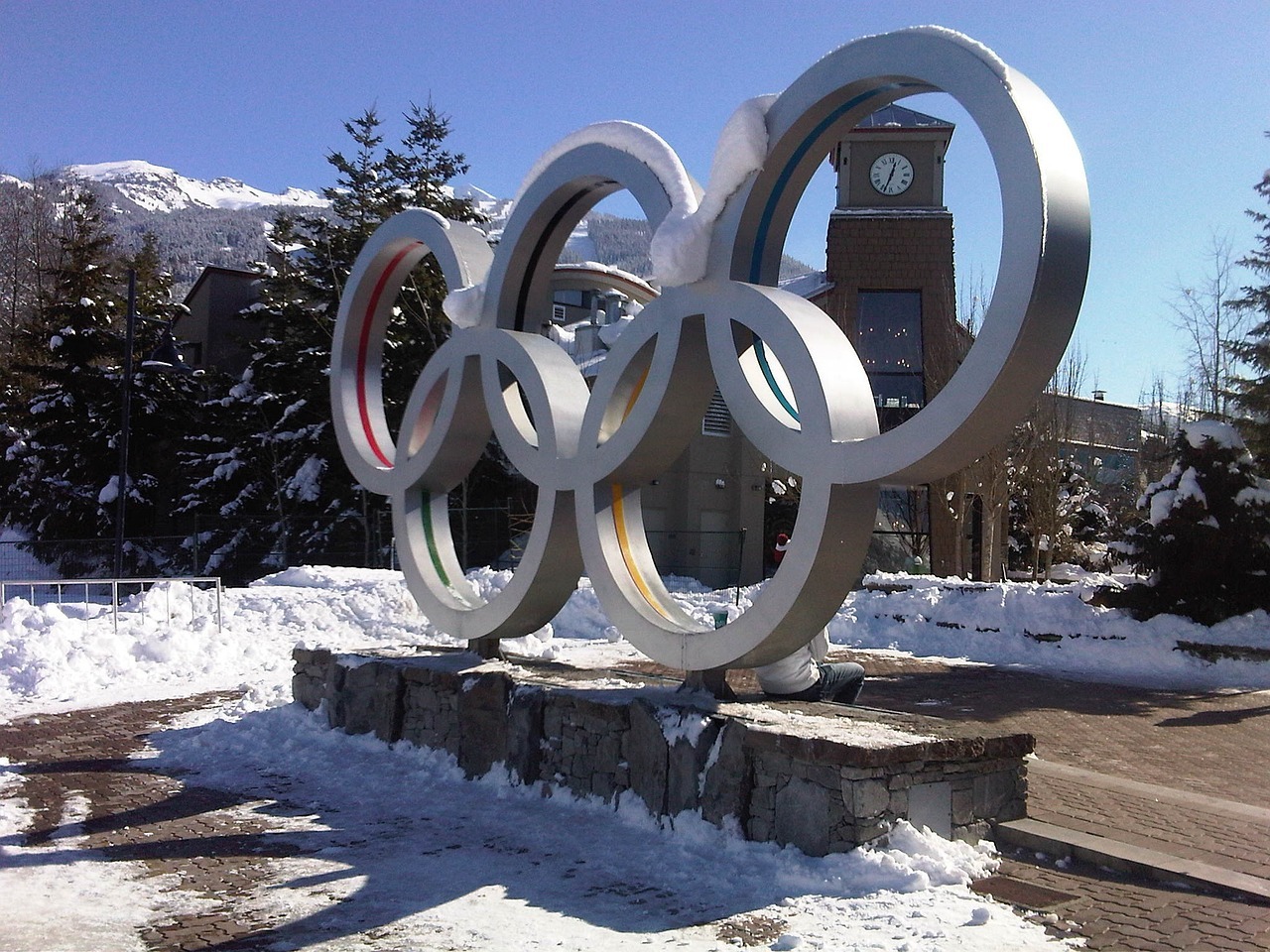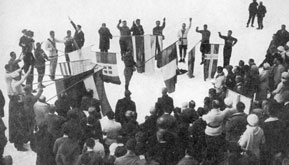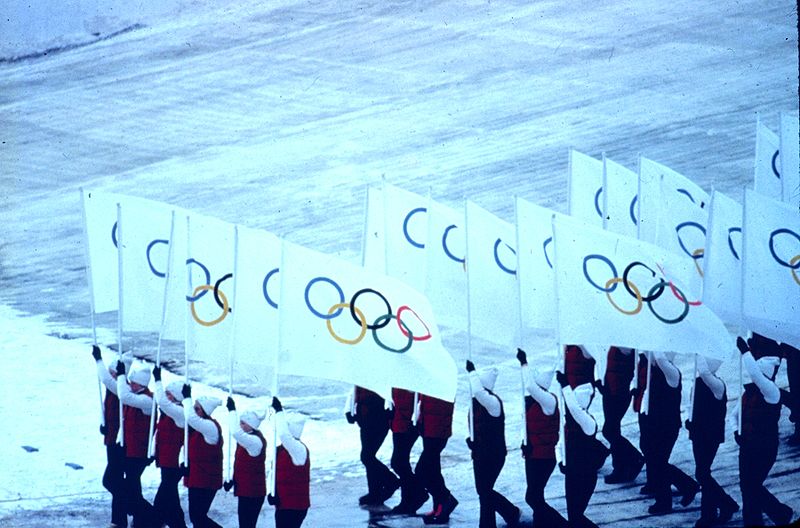After the 22nd Winter Olympic Games held last 2014 in Sochi, Russia, the next Winter Olympics scheduled in 2018 will be held in Pyeongchang, South Korea. The administration of South Korea offered North Korea to co-host the games as an effort to build bridges between the two long-standing enemies. South Korea wanted some parts of the skiing events to be held at North Korea’s Masikryong Ski Resort.
However, diplomats and human rights advocate around the world raised issues like viability, standards, safety, and human rights protection, considering the controversy surrounding the construction of the resort, as well as the shortage of health care services and poor infrastructure in the communist country. Eventually, South Korea’s proposal was snubbed by the North Korean leader Kim Jong-un. Still, some believe that the possibility shouldn’t merely be dismissed.
Sports has been considered as an area where nations’ differences can most easily be overcome. This has been the story of the Winter Olympics since then. Let us share you a little bit backstory of this major international sporting event.
Establishment of the Winter Olympics
The predecessor to the Winter Olympics was the Nordic Games. Founded by General Viktor Gustaf Balck, it was the first international multi-sport event that focused on winter sports. The first Nordic Games was held in 1901 in Stockholm, Sweden, with only athletes from the Scandinavian countries allowed to compete. The event was held again in 1903 and 1905, and then quadrennially until 1926 – always in Sweden.
Meanwhile, the 1908 Summer Olympics in London included figure skating as the first winter sports competition. In 1911, as a preparation to the 1912 Summer Olympics to be held at Stockholm, the IOC proposed the staging of a separate winter competition, but Sweden declined to protect the integrity and popularity of the Nordic Games. The idea of introducing Nordic events to the Games was later resurrected for the 1916 Summer Olympics in Berlin, Germany, but the outbreak of World War I in 1914 pushed organizers to cancel the event.
After the war, the 1920 Summer Olympics was held in Antwerp, Belgium. Germany and its ally countries were banned to participate in the Games after their loss in the war. Despite continuing protests from the Scandinavian countries, the Games still featured an ice hockey and figure skating tournament.
For the 1924 Summer Olympics to be hosted in Paris, the International Olympic Committee (IOC) decided to launch a separate “International Winter Sports Week” in Chamonix, France. Before this event, there had been much discussion among the IOC Congress because of the growing call for equality in winter sports. The sports included in the program were curling, ice hockey, skating, bobsleigh, and Nordic skiing.
The winter games proved to be a success when more than 250 athletes from 16 nations competed in its 16 events. Two years later, it was retroactively designated as the first Winter Olympics.
The Scandinavians, who won 28 out of 43 medals at Chamonix, eventually lifted their objections to future Winter Games. The Nordic Games was discontinued in 1926 because it will be redundant to hold anymore because of the Winter Olympics.
 Early years
Early years
The 1928 Winter Games in St. Moritz, Switzerland was the first Winter Olympics held that was not in conjunction with the Summer Olympics. The fluctuating weather conditions made the Games unforgettable. The opening ceremony was held in a blizzard, while they experienced unseasonably warm weather during the rest of the event. The 10,000-meter speed skating competition was abandoned due to the weather. But the weather wasn’t the only thing memorable about the event: Sonja Henie of Norway became the youngest Olympic champion in history when she won the figure skating competition at the age of 15. She held the title for the next 74 years.
The next Winter Olympics was the first to be hosted outside of Europe. In 1932, the Games was held in Lake Placid, United States. Only 17 nations participated, down from 25 from the previous Games because of the Great Depression. Henie defended her Olympic title that season until the 1936 Olympics. American athlete Eddie Eagan became the only Olympian to win gold medals at both summer and winter games in different sports.
The 1936 edition was held in the towns of Garmisch and Partenkirchen in Germany. The season was the first time the Olympic flames were lit for the opening ceremony of Winter Games, and the last time the Winter and Summer Olympics were hosted by the same country in the same year. It was also when alpine skiing made its debut as an Olympic sport.
Then, World War II interrupted the celebrations of the Winter Olympics. Sapporo, Japan was supposed to be the venue for the 1940 Games but it was withdrawn because of the ongoing Japanese invasion of China. The organizers attempted to move the Games to the previous location, but the German invasion of Poland forced them to cancel the event completely. The 1944 Winter Olympics scheduled for Cortina D’Ampezzo, Italy, was also canceled due to the ongoing war.
Post-World War II
The impact of the Second World War was still felt during the 1948 Winter Games. The organizing committee faced several challenges such as lack of financial and human resources, and the need to choose a politically neutral country as a venue. St. Moritz, Switzerland was selected to host the first post-war Olympics because of its neutrality and because most of the venues from the 1928 Games was still in place. Twenty-eight countries participated, while Japan and Germany were banned to join the Games because the countries were still ostracized by the international community because of their role during the war.
The 1948 Games featured two new demonstration sports: the military patrol (later called biathlon) and winter pentathlon, which was discontinued after this edition.
1950s-1990s – The era of many “firsts”
Nordic athletes dominated the 1952 Winter Olympics in Oslo, Norway. It was also the first time when the Olympic flame was lit in the fireplace entirely on skis by 94 participants.
The first Winter Olympics to be televised was the 1956 edition in Cortina d’Ampezzo, Italy, which was not able to host the Games in 1944. This event tested the feasibility of televising large sporting events. It was also when the Soviet Union first joined the Games and won more medals than any other countries.
The Winter Olympics returned to the US in 1960. Squaw Valley, California, was chosen as the venue for the event. It was during the height of the Cold War and the political rivalry between the US and USSR was evident even in the field of play. The Soviets dominated the Games once again, with a haul of 21 medals. It was also the first Winter Olympics to have used a computer to tabulate results and the first to feature female speed skating events. It also marked the beginning of corporate sponsorship of the Games.
In 1972, the Games visited Asia for the first time. Sapporo, Japan, became the first venue outside Europe and North America. This was the edition when the issue of professionalism became contentious. The president of IOC then has threatened to ban a number of alpine skiers from the competition because they were trained in a ski camp and were no longer amateurs. Because of that, Canada did not send teams to the ice hockey tournaments in 1972 and 1976 in protest of their inability to use their players from professional leagues.
The first national team boycott in the Winter Olympics happened in 1980 at Lake Placid, which hosted the 1932 Games. Taiwan decided not to participate after an announcement by the IOC mandating that they should change their name and national anthem to accommodate China. Taiwan has been competing under the name “Republic of China” and has been using China’s flag and anthem until then. When the Taiwanese athletes arrived at the Olympic village, they were not admitted because of their Republic of China ID’s. To protest, they left the Olympics just before the opening ceremonies.
In 1986, the IOC decided to separate the Summer and Winter Games. Instead of holding both events in the same calendar year, the committee placed them in alternating even-numbered years. They have decided that 1992 will be the final year to have held both events. The 1994 Winter Games in Lillehammer, Norway, was the first Winter Olympics held separate from the Summer Games.
The 1988 Winter Olympics was hosted by Calgary, Canada. It was the first to span 16 days. New events were added in speed skating and ski jumping, and more countries competed than ever before. It was also when the famous Jamaican bobsleigh team entered the Winter Olympics.
Meanwhile, the 1998 Winter Olympics held in Nagano, Japan, was the first to host more than 2,000 athletes. The men’s ice hockey tournament was finally opened to professionals, accommodating many of the NHL players from Canada and US. Snowboarding also made its Olympic debut in this edition, enticing a whole new generation of fans and boosting television ratings of broadcast companies that air the Olympics.
Winter Olympics in the 21st Century
Because of the 9/11 terrorist attack, the 2002 Winter Olympic Games in Salt Lake City, Utah, was highly protected. The event had the highest security level of all the previous Olympic games. The United States’ Office of Homeland Security designated the Olympics a National Special Security Event (NSSE). The US Marines provided aerial surveillance and radar control, and the FBI and NSA monitored all text and email communications within the Salt Lake City area around the time of the Olympics.
The 2006 Games was a victory for Asia, most especially, South Korea. Athletes from the country won 10 medals where 6 of them were gold. The event, commonly known as Torino 2006, was held in Turin, Italy.
The 2010 Winter Olympics in Vancouver, Canada, was labeled by detractors as the “worst Olympics ever.” It was held in the midst of a recession and global warming, plus some venues were lacking in snow. They even brought in loads of snow from colder spots in the state just to fill it up. To make it worse, a Georgian luge competitor died on the training run on the day of the opening ceremonies.
The Vancouver Games was also notable for the underperformance of the Russian athletes. The Soviets were always on the top five medal-winning countries, but in 2010, they finished 11th in gold medals and 6th in total medals. Their sports officials were immediately called to resign by their president after the Olympics. Meanwhile, Asian athletes were on the rise as they won a total of 31 medals that year.
Then came the 2014 Winter Olympics held in Sochi, Russia. For the first time, the Games was hosted by the country which dominated the medal-bagging for a long time. The Sochi Olympics was the most expensive Olympic event in history, with a cost of $51 billion to make the resort into a Games-worthy location. Over 2,800 athletes from 88 countries participated in its 98 events.
After their disappointing performance in the 2010 Games, the host nation topped the medal table this time, bagging 33 medals including 13 golds.
However, the 2014 Sochi Games was highly controversial. Issues about corruption among officials leading to cost overruns, allegations of doping by the Russian government, safety concerns for LGBT athletes and spectators, protests by ethnic Circassian activists over the site of Sochi, and terrorist threats by jihadist groups related to the insurgency in the North Caucasus prevailed the headlines that time.
The widespread state-sponsored doping allegations caused the IOC to initiate an investigation of 28 athletes from the Sochi Olympic Games in 2016. By December, Russian officials admitted that the lab director tampered with urine samples of the athletes and replaced them with clean urine so that drug tests would be negative. It was one of the biggest conspiracies in sports history, tainting not just the 2014 Winter Olympics but the integrity of the entire Olympic movement. The Russian track and field team were banned to join the 2016 Summer Olympics in Rio de Janeiro, Brazil, because of the controversy.


 Early years
Early years